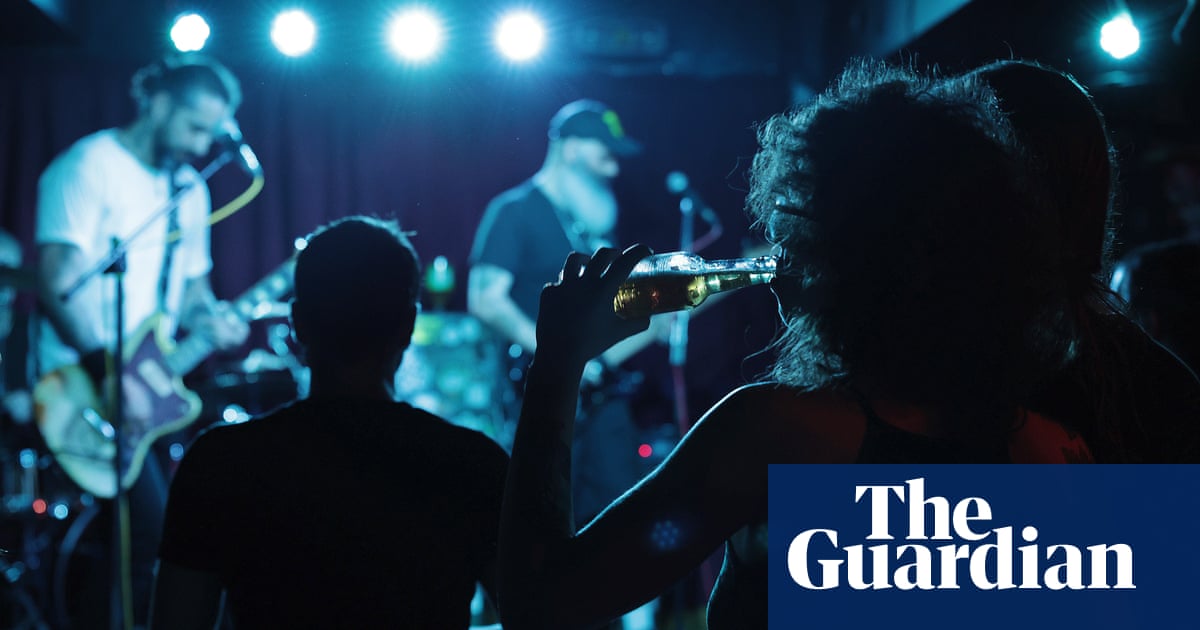
hen they were in their prime, these places saw it all: the Who smashing their guitars on stage; the debut of a 16-year-old Amy Winehouse; the arrival of 60s rhythm and blues, 70s punk, 80s pop and 90s rock.
But some of the venues that helped launch musical careers from Status Quo to the Sex Pistols are now far from the spotlight, languishing in corners of London as laundrettes, fried chicken joints and even police stations.
Now, in an attempt to save their placein the capital’s cultural history, a music promoter turned photographer has documented 150 landmarks of the capital’s jazz, blues, rock, folk, punk and indie history.
Paul Talling’s new photographic essay includes dozens of pubs and bars where the likes of Ritchie Blackmore’s Deep Purple and Siouxsie and the Banshees first tuned up their guitars.
Talling, 52, became involved in London’s musical scene in the 1980s, and at the end of that decade organised the Manic Street Preachers’ first concert in the capital.
“I offered £30 petrol money to get them from Wales to London so they could play in ’89 at the Opera On the Green at Shepherd’s Bush. They were so honest they only asked for £20 because that was all they needed to get there in their van. That was their first London gig, so they told me, and I just had to put that in this book,” Talling said.
Talling, who also runs rock and pop walking tours around London, said he has noticed over the last two decades how many of the famous music pubs, bars and clubs have been taken over by fast-food chains, housing associations and even evangelical Christian churches.
It took him three years of tramping across the city to rediscover, research and shoot all of the old venues, many of which were in danger of being erased from rock’n’roll history.
“It’s not all doom and gloom,” he said. “Some of the old places are still going strong, like the Half Moon in Putney or the 100 Club in Oxford Street, with new bands as well as old ones playing there. But it was vital to capture the places where some of the biggest and even smallest acts from the postwar era onwards first took to the stage or had some of their most famous moments.”
With the coronavirus lockdown threatening to close more pubs and clubs in the near future, Talling fears he may have more former gig venues to visit for his second volume.
“I’ve another 150 more places to photograph, like the old Rainbow in Finsbury Park, but I will also keep doing the rock’n’roll tours of London too. There are stories about those great rock nights that you cannot put in any book, stories that are unprintable, maybe even libellous – so I’ll keep those tales for the walking tours,” he said.
The Roxy, 41-43 Neal Street, Covent Garden
On New Year’s Day, 1977, the Clash were the headline act to open this punk/new wave venue. Among the regular fledgling bands to follow them there were Siouxsie and the Banshees and X-Ray Spex.
The venue, where DJ Don Letts played dub reggae between bands, partly because there were so few punk records to play, became so synonymous with the punk/new wave scene that an album, Live at the Roxy London, was recorded in the same year, and that spring made the Top 20 in the UK album chart. Marc Bolan loved the place so much that in March 1977 T Rex hosted their Dandy in the Underworld album party launch there.
Yet within a year, the punk bubble in the capital appeared to have burst, and the Roxy closed, to the anguish of fans who squatted in the building in protest at its closure. The venue was eventually shut and gutted. Today it is the location of a Speedo sportswear shop.
Rayners Hotel, 23 Village Way, Rayners Lane, Harrow
Amy Winehouse was once quoted as saying that she began her career in this spot, “singing for old people in the back room of a pub in Rayners Lane”.
At 16, Winehouse sang four songs there in 2000.
Between the late 1960s and early 2000s, the Rayners hosted an eclectic range of acts including pub rock-to-nascent punk legends Dr Feelgood. Ska royalty like Prince Buster performed live sets at one of its skinhead reggae nights.
The pub closed in early 2006 and was due to be demolished before the local council put an 11th-hour conservation order on the building. It is now occupied by Christ the Redeemer religious training college, although the pub sign still hangs outside.
The Vortex, 203 Wardour Street, Soho
Another punk club that sprung up like the Roxy in 1977, the Vortex is even mentioned in the lyrics of ‘A’ Bomb in Wardour Street by the Jam.
In that song, Paul Weller et al recalled violent clashes between the venue’s regulars, the staff and a gang of neo-Nazi skinheads. (“They’ve called in the army, they’ve called in the police / I’m stranded on the vortex floor / My head’s been kicked in and blood’s started to pour…”)
Among the acts who started their careers on the Vortex’s stage was the all-girl punk band the Slits, and a group that had travelled from Dublin known as the Boomtown Rats. And it was from there that Steel Pulse, a roots reggae outfit from Birmingham, announced Elvis Presley’s death in 1977.
Some in the crowd cheered – an act that was denounced from the stage by a young music fan known as Danny Baker, the future radio DJ and television presenter.
The former venue is now the Nova Club below Dirty Harry’s of Soho, whose boxed-off neon-sign in the window advises customers: “This Is Not A Strip Club”.
The Ricky-Tick, 1a High Street, Hounslow
This venue, above a car showroom in west London, was originally called the Attic Club and opened in 1964 with the likes of Georgie Fame and Geno Washington playing there.
The Ricky-Tick was an influential 1960s rhythm and blues club. Among the most famous acts to play there were Jimi Hendrix, Pink Floyd, Cream, the Crazy World of Arthur Brown, the Yardbirds and the Who. One heyday Ricky-Tick poster advertised a Jimi Hendrix Experience concert with the entry fee of 7 shillings, 6 pence.
The club also pioneered Tamla Motown’s triumphant march into the UK with the Supremes, the Temptations and a young Stevie Wonder all appearing there. It also included an in-house fashion store or ‘Boutick’ where patrons could buy Swinging 60s clothing.
The club’s Hounslow HQ today is the offices of an employment agency, located above a branch of the Nando’s restaurant chain.












